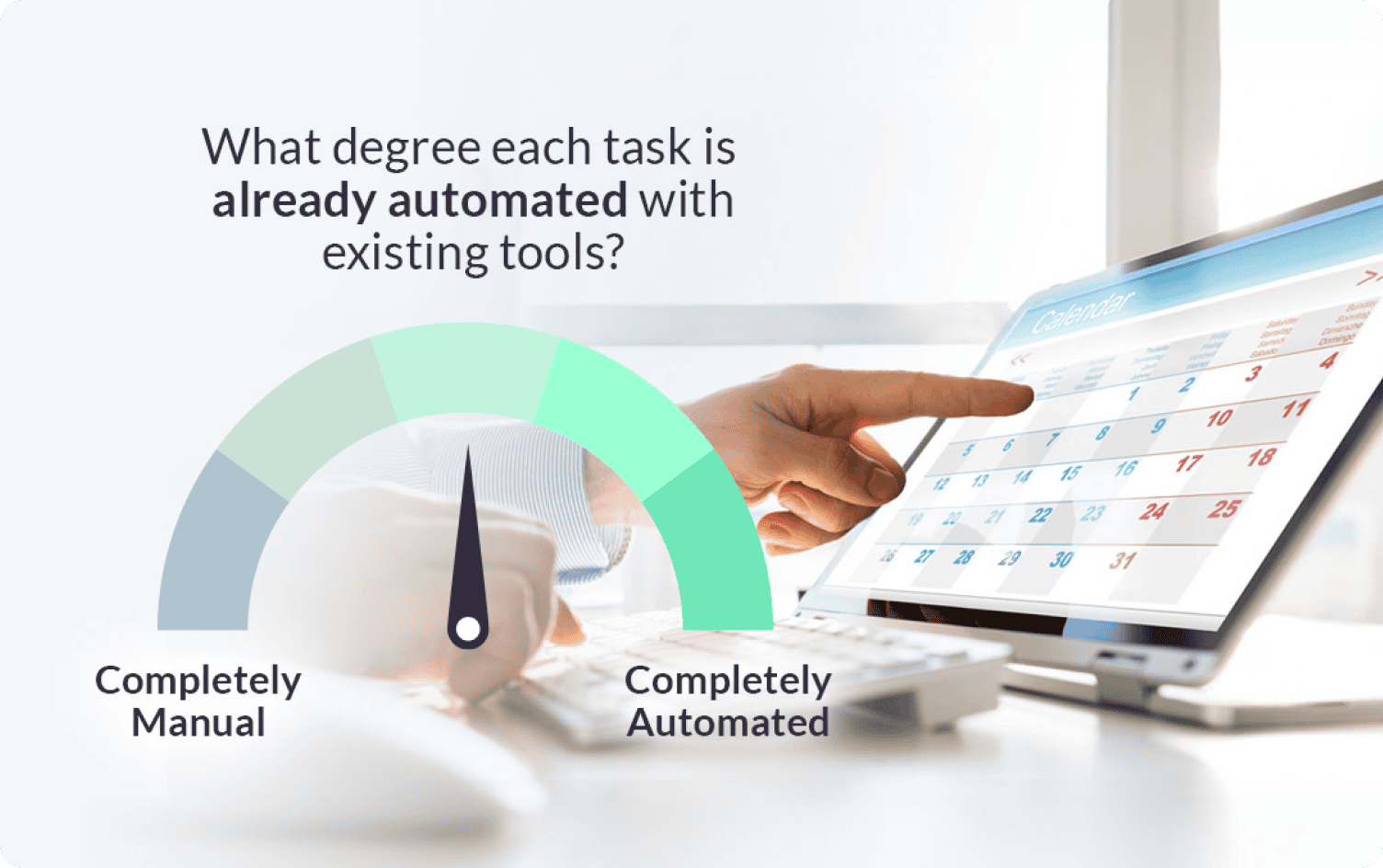
What Is Interview Intelligence?
Discover how interview intelligence can analyze your process to enhance interviewer effectiveness.

TL;DR: How Recruitment Automation Improves Hiring
Automated recruiting is the process of using dedicated tools or platforms that can significantly reduce time-to-hire while helping companies find better-quality candidates. These tools lessen the time and cost of common administrative tasks and can also reduce the impact of common issues that arise during the recruiting and hiring process.
Recruiting automation is a tech-based approach that solves many different problems associated with hiring. Everything from sourcing the right candidates for open positions to ensuring each candidate is fully engaged in the process can be automated with the right tools. That said, there’s no need to use every automation tool available to you.
Every hiring software on the market is designed to solve one or more specific problems that are common roadblocks to successful hiring. Each tool uses a varying degree of workflow automation, decision-making algorithms, or artificial intelligence (AI) systems to get the job done. However, the one that makes the most sense for your organization depends on the nature of your hiring process.

Challenges in the recruiting and hiring process are all too common. According to the Federal Reserve Bank of Richmond, the most common recruiting challenges in recent years have been:
Not of these challenges are solved by automation. However, automation software can help alleviate areas such as sourcing better candidates and maintaining better lines of communication with candidates currently in the application process. When properly utilized, solving those two problems alone can lead to faster hiring of more qualified candidates.
You’ll find that you likely need automation tools if one or more of the following is true:
Few companies struggle with only one of these problems. However, many recruiters have increased their reliance on more manual solutions to recruitment instead of focusing on automated recruiting tools.
The Federal Reserve Bank of Richmond highlighted several recruitment tactics that have increased in recent years, a list that includes:
Unfortunately, taking more manual approaches to recruitment doesn’t solve most of the problems recruiters face. Instead, they’re often costly, time-consuming, and generate limited applicant pools with skills that may not be aligned with the job requirements.
As noted earlier, recruitment tools designed to automate the hiring process can range from simple algorithms to more complex AI systems. That’s important to note due to the common misconception that all recruiting automation software is AI-driven.
It’s important to understand the distinction between algorithms and AI.
This does not mean that all AI-based recruiting tools are ineffective or that you should avoid them. However, if you’re specifically looking to create completely automated hiring systems with no AI components, there are many such software platforms available.

To automate your recruitment process, start by charting every component of your existing recruitment workflow. For many recruiters, that workflow contains most or all of the following elements:
Each of these components can take several hours to complete. A large number of factors can influence how long any single element can take, including how many other recruiters and hiring managers are available to help reduce the administrative burden.
Once you have a list of your existing workflow components, determine how long it takes you to complete each step, and to what degree each task is already automated with existing tools. A Likert scale from 0 (no automation at all) to 5 (completely automated) can work for this, as it’s possible that some tasks are partially manual and partially automated.
For example, you may already be using a dedicated scheduling tool that you use during the hiring process. However, most scheduling tools still have fairly manual elements to them, such as requiring you to individually enter each candidate’s information into the scheduler before sending it. In this case, you might give that component of your workflow a 3, as there is room for improvement in how much it could be automated.
Without a scheduling tool, you may have spent an hour each week scheduling, while your partially automated process could have reduced that to 30 minutes. Meanwhile, a fully automated scheduling tool could possibly reduce that time even further.
Once you’ve finished this task, you will have a much better idea of where and to what degree recruitment automation is needed. How much you need automation will depend on how much time you spend not just on each individual task, but all of your tasks combined that still need automation, or need better automation than you’re currently using.

While many recruiters complain about a lack of quality applicants with the desired skillsets, the most common issue is not that talent doesn’t exist. Instead, recruiters are often spending too much time on the administrative tasks involved in the recruitment process, to the detriment of actively competing for the best talent available.
When properly established, an effective recruitment automation workflow can have significant benefits, such as:
The more automated your recruiting process, the more time and money you’ll save across the entire hiring process. This is confirmed by multiple studies, including a data study by Miroslava Peicheva in the journal HR & Technologies which reports that “the "manual" publication of the advertising of the vacancy takes about 1.5 hours, while the automated one takes 15 minutes.” The study also reports that “46% of candidates lose interest in a role if they don’t hear back from the employer within one to two weeks.”
In both cases, when you effectively deploy automated recruiting software, you not only increase the speed at which you can post jobs to selected job boards but also take advantage of automated communication and engagement tools that keep top candidates from losing interest before you’re able to move them through to interviews and offers.
The battle for talent is getting more difficult each year. With skilled talent pools shrinking, recruiters must shift their approach and deliver a superior experience for candidates. Automated hiring tools can help create a candidate-first recruiting process that’s both a time and cost-saving strategy for businesses.

Recruitment Essentials:
Versatile Video Interviews
Unlock the potential of recruitment automation with VidCruiter's comprehensive interviewing solutions. Our platform offers:
Join thousands of organizations transforming their hiring process. Learn more and book a demo.
Almost every part of the recruiting workflow can be automated using a recruiting automation platform. The key to maximizing effectiveness is knowing when and where best to apply your recruitment team’s valuable judgment and resources. While you can automate the admin and the many parts of the hiring process, there is no substitute for the expertise and experience that your recruitment team can offer for crucial hiring decisions and creating a positive candidate experience.
Staffing automation uses algorithm-based software to source, hire, and manage talent, covering a wider variety of tools and processes than recruiting automation. It includes managing temporary staff, contractors, and various workforce management aspects such as shift scheduling, compliance tracking, and performance evaluations.
When companies automate recruitment, they can scale their recruitment strategies, find higher-quality candidates for vacant positions, maintain engagement with candidates throughout the hiring process, and significantly reduce their time-to-hire.
Modernize your hiring process with expert insights and advice.